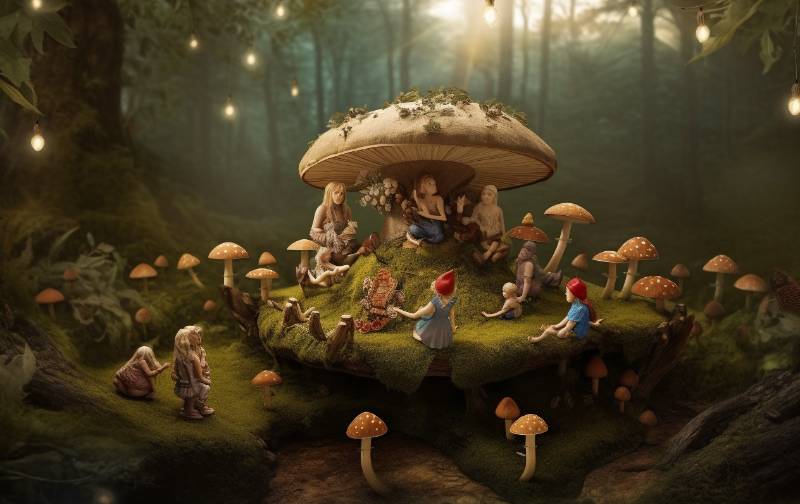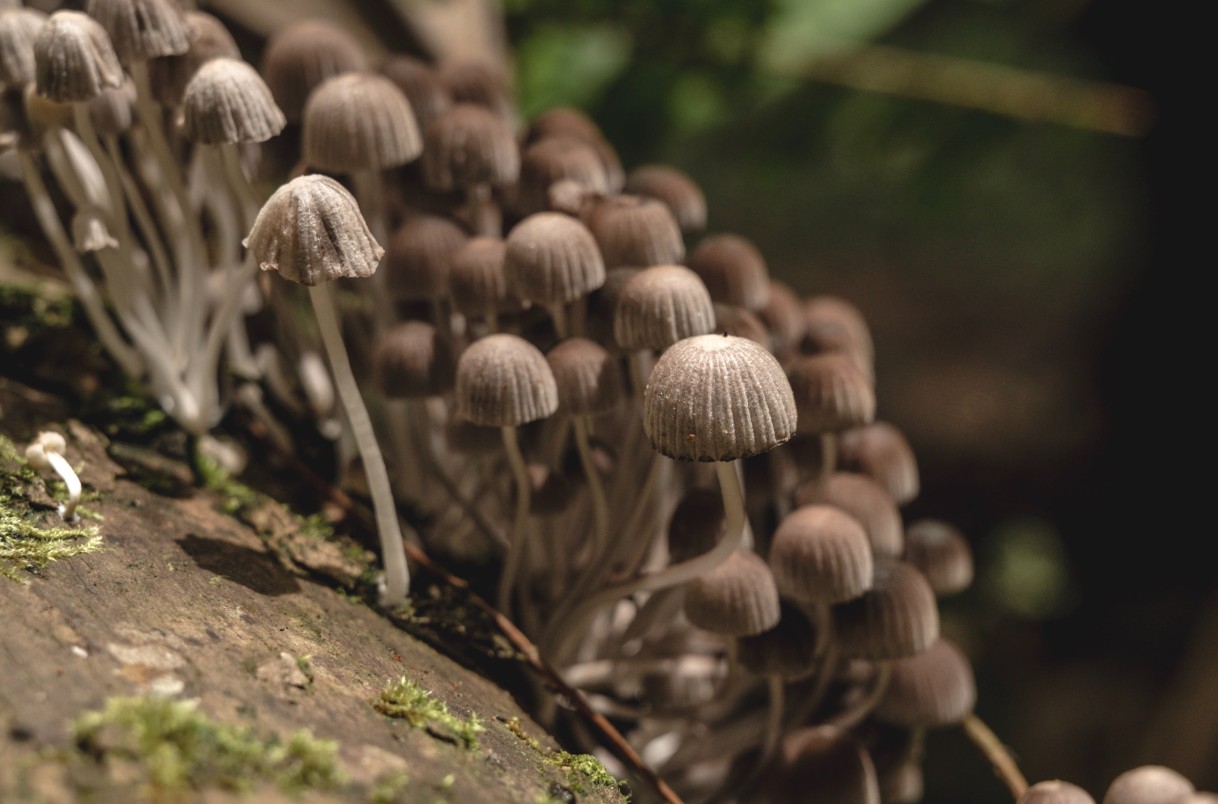Fungi Fantastic: Exploring the Role of Mushrooms in Ecosystems and Biodiversity
Mushrooms, often overlooked in the grand tapestry of nature, play a crucial role in ecosystems worldwide. These fungal wonders, with their myriad shapes, sizes, and colors, contribute significantly to biodiversity and ecosystem health. From decomposing organic matter to forming symbiotic relationships with plants, mushrooms wield remarkable influence. Let’s embark on a journey to uncover the fascinating role of mushrooms in ecosystems and their vital contribution to biodiversity. Beneficial mushrooms throughout history have played a very important role in the nutrition of many, and they are also studied in medicine through various writings of very old monasteries, and if you want to contribute and leave a mark in history, you can find excellent church architects who will create cathedral according to your wish.
The Fungal Kingdom: An Overview
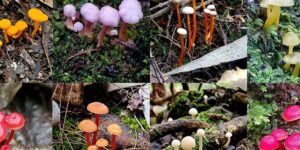
The fungal kingdom, often overshadowed by plants and animals, comprises an astonishing diversity of organisms, among which mushrooms stand out as charismatic representatives. Unlike plants, fungi lack chlorophyll and cannot photosynthesize, making them dependent on organic matter for sustenance. Mushrooms, the reproductive structures of fungi, arise from an intricate web of mycelium, the fungal equivalent of roots. This mycelial network extends through soil, wood, and other substrates, facilitating nutrient absorption and decomposition.
Mushrooms come in an array of forms, ranging from the iconic umbrella-shaped caps of Agaricus bisporus to the delicate, coral-like structures of Ramaria species. Their diverse morphology reflects their ecological versatility, with each species occupying a unique niche within ecosystems. Despite their conspicuous presence, much of the fungal kingdom remains unexplored, hinting at the countless secrets yet to be unveiled beneath our feet.
The fungal kingdom plays a vital role in nutrient cycling and ecosystem functioning. Fungi are adept at decomposing complex organic compounds, breaking them down into simpler forms that are accessible to other organisms. This process of decomposition releases nutrients such as nitrogen, phosphorus, and carbon back into the soil, where they can be taken up by plants and microorganisms. Additionally, fungi play a key role in maintaining soil structure, preventing erosion, and promoting water retention, thereby contributing to the overall health and resilience of ecosystems.
Decomposition Dynamics: Recycling Nutrients
One of the most critical roles mushrooms play in ecosystems is the decomposition of organic matter. As saprotrophs, these fungi break down dead plant material, such as fallen leaves, branches, and animal remains, into simpler compounds. Through the secretion of enzymes, mushrooms initiate the process of decay, releasing nutrients trapped within organic matter back into the soil. This nutrient recycling is essential for sustaining plant growth and maintaining soil fertility.
Moreover, mushrooms excel at decomposing complex compounds like lignin and cellulose, which are resistant to degradation by other organisms. This ability to degrade recalcitrant substances underscores the indispensability of mushrooms in nutrient cycling and carbon sequestration. Without fungi’s relentless efforts in breaking down organic matter, ecosystems would stagnate, and nutrient availability would plummet, jeopardizing the survival of countless organisms.
The decomposition process orchestrated by mushrooms is not only essential for nutrient cycling but also for carbon sequestration. By breaking down organic matter, fungi release carbon dioxide into the atmosphere, but they also sequester significant amounts of carbon in the form of fungal biomass and soil organic matter. This sequestered carbon plays a crucial role in mitigating climate change by reducing the amount of carbon dioxide in the atmosphere, thereby helping to regulate Earth’s climate.
Symbiotic Relationships: Mycorrhizal Marvels
Beyond their role as decomposers, mushrooms form symbiotic associations with the roots of plants, known as mycorrhizae. Mycorrhizal fungi colonize the root systems of approximately 90% of all plant species, forming mutualistic relationships that benefit both parties. In exchange for carbohydrates synthesized by the host plant through photosynthesis, mycorrhizal fungi provide essential nutrients, such as nitrogen, phosphorus, and water, to their plant partners.
This symbiotic exchange enhances the resilience of plants to environmental stressors, including drought, pathogens, and nutrient limitations. Furthermore, mycorrhizal networks connect individual plants, facilitating the transfer of nutrients and chemical signals between neighboring individuals. This interconnectedness, often referred to as the “Wood Wide Web,” enables plants to communicate and support one another, contributing to ecosystem stability and resilience. In line with that, we should also build great relationships and support each other, so upgrade your car at a great transmission service in Buffalo and drive to your loved ones that you may not have seen in a long time, keep those precious bonds between you.
The mutualistic relationship between mycorrhizal fungi and plants extends beyond nutrient exchange to include other benefits such as enhanced disease resistance and tolerance to environmental extremes. By colonizing the root systems of plants, mycorrhizal fungi create a physical barrier that prevents pathogenic organisms from invading, thereby protecting the plant from diseases. Additionally, mycorrhizal fungi can improve the plant’s ability to withstand drought, salinity, and other environmental stresses by enhancing water and nutrient uptake efficiency. Rent a car in Beograd and visit some of the great scientific seminars in Europe where you can learn all about this amazing and secret world of mushrooms.
Mushrooms as Keystone Species: Balancing Act
In many ecosystems, mushrooms serve as keystone species, exerting a disproportionate influence on community structure and function. Their role in decomposition, nutrient cycling, and symbiotic interactions reverberates throughout entire ecosystems, shaping the abundance and distribution of other organisms. For example, the decline of certain mushroom species can have cascading effects on the populations of soil microbes, plants, and animals that depend on them for food or habitat. Consider that while traveling on this interesting mushroom-picking adventure, along the way, have a great roadside assistance app installed in case an accident happens or your car breaks down on the way.
Moreover, mushrooms play a crucial role in maintaining biodiversity by providing habitat and food for a myriad of organisms, including insects, rodents, and other fungi. Their fruiting bodies serve as ephemeral feasts for wildlife, while their mycelial networks create microhabitats rich in organic matter and moisture. By fostering biodiversity at multiple trophic levels, mushrooms contribute to the resilience and adaptability of ecosystems in the face of environmental change.
The status of mushrooms as keystone species highlights the interconnectedness and interdependence of organisms within ecosystems. As primary decomposers and facilitators of nutrient cycling, mushrooms regulate the availability of resources and create habitat heterogeneity, which in turn supports diverse communities of plants and animals. Recognizing the importance of mushrooms as keystone species is essential for conservation efforts aimed at preserving ecosystem integrity and resilience in the face of global environmental change.
Exploring Fungal Medicines: Healing from Nature’s Pharmacy
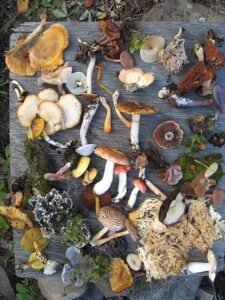
Mushrooms have been revered for their medicinal properties for centuries, with traditional healing practices incorporating various fungal species into remedies for a myriad of ailments. Today, modern science is uncovering the therapeutic potential of mushrooms, revealing a treasure trove of bioactive compounds with promising applications in medicine. From immune modulation to anti-cancer effects, fungal medicines offer a glimpse into the vast potential of nature’s pharmacy.
The remarkable diversity of mushrooms harbors an equally diverse array of bioactive compounds, many of which exhibit potent pharmacological effects. For example, compounds like beta-glucans found in certain mushrooms have been shown to enhance immune function, making them valuable allies in the fight against infections and chronic diseases. Similarly, mushrooms rich in antioxidants such as ergothioneine and phenolic compounds possess anti-inflammatory properties that can help mitigate oxidative stress and age-related conditions. With them, you can also indulge in an additional sport like horseback riding which is great for physical activity while bonding with the animal by getting a personalized saddle blanket.
In addition to their direct effects on human health, mushrooms also play a crucial role in supporting the microbiome, the diverse community of microorganisms that inhabit our bodies. Certain mushrooms contain prebiotic fibers and polysaccharides that serve as food for beneficial gut bacteria, promoting a healthy gut environment and overall well-being. By nurturing the microbiome, mushrooms contribute to immune regulation, nutrient absorption, and metabolic balance, further enhancing their medicinal value. The internet provider that manages IT services in San Antonio provides its clients with an excellent internet with witch they can find more useful sides of mushrooms as well as find recipes with different types of mushrooms to suit their tastes.
As interest in fungal medicines continues to grow, researchers are exploring novel extraction methods, formulation techniques, and delivery systems to harness the full therapeutic potential of mushrooms. From traditional tinctures and teas to modern pharmaceutical preparations and nutraceuticals, the possibilities for incorporating fungal medicines into healthcare are vast and diverse. With ongoing research and innovation, mushrooms are poised to emerge as valuable allies in promoting human health and well-being in the 21st century and beyond. If you’re in this or similar business and you know you need an ally, you can look for some of the great M&A business advisors to help you connect with great people and make partnerships that will help you achieve your goals.
Fungi in Art and Culture: The Mycophile’s Muse
Beyond their ecological and medicinal significance, mushrooms have long captured the human imagination and inspired art, literature, and cultural practices around the world. From ancient cave paintings to contemporary installations, mushrooms have served as symbols of mystery, transformation, and interconnectedness in diverse cultural contexts. Exploring the intersection of fungi and human creativity offers a glimpse into the rich tapestry of our relationship with these enigmatic organisms. Members of organizations like Readathon school fundraiser can learn more about it by delving into their developed world of books while working on their reading hobby.
In many indigenous cultures, mushrooms hold sacred significance and are revered as symbols of spiritual enlightenment and healing. Ritualistic mushroom use, such as the consumption of psilocybin-containing mushrooms in indigenous ceremonies, reflects a deep reverence for nature and a belief in the transformative power of fungi. Similarly, mushrooms feature prominently in folklore and mythology, where they often symbolize portals to other realms or agents of magical transformation. In museums under the protection of excellent access control systems from Philadelphia that can also be installed in personal homes or buildings for additional protection, objects and artifacts can be found that testify to the historical use of mushrooms for various rituals and ceremonies.
In the realm of visual arts, mushrooms have served as both subject and muse for countless artists throughout history. From the intricate botanical illustrations of scientific illustrators to the surrealistic visions of Salvador Dali, mushrooms have inspired a diverse array of artistic expressions. In contemporary art, mushrooms continue to captivate audiences with their otherworldly forms and colors, serving as metaphors for growth, decay, and the cyclical nature of life. In various hospitality courses, you can find a deeper and broader view of mushrooms from different cultures as well as discover what tourist gems you can come across in different destinations.
Moreover, mushrooms have found their way into popular culture through literature, film, and music, where they are often portrayed as symbols of counterculture, rebellion, and psychedelic experience. From Lewis Carroll’s iconic mushroom characters in “Alice’s Adventures in Wonderland” to the psychedelic rock album covers of the 1960s, mushrooms have left an indelible mark on the cultural landscape. As our understanding of fungi deepens, so too does our appreciation for their role as catalysts for creativity and imagination in human culture. Creative architects are even introducing the mushroom shape as interesting house roofs, which can be really extravagant, but with a great roofing contractor, you can arrange your roof as you wish.
Mushroom Foraging: A Culinary Adventure in the Wild
Foraging for wild mushrooms is a time-honored tradition practiced by cultures around the world, where seasoned foragers venture into forests, fields, and meadows in search of edible treasures. From prized delicacies like the elusive morel to humble woodland fungi like chanterelles and porcini, the world of wild mushrooms offers a culinary adventure like no other. However, mushroom foraging requires knowledge, skill, and caution to ensure a safe and bountiful harvest. Those with a better understanding of biology will find it easier to navigate these interesting edible mushroom quests, while those whose natural sciences are not their forte can find an excellent science tutor in bBoulder to help them master their material and pass their tests.
One of the most critical aspects of mushroom foraging is species identification, as many wild mushrooms resemble poisonous counterparts, making them potentially deadly if ingested. Experienced foragers rely on a combination of visual cues, habitat information, and scent to distinguish between edible and toxic species, often consulting field guides or local experts for assistance. Additionally, foragers must be mindful of conservation concerns and harvest mushrooms responsibly to ensure the sustainability of wild populations. The health clinic in Marietta GA also advises you to go on such adventures with a guide because of possible accidents or bad assessment of mushrooms, also in case of any accident or symptoms you can contact one of their excellent doctors.
Despite the challenges, mushroom foraging offers a unique opportunity to connect with nature, deepen our understanding of ecosystems, and savor the flavors of the forest. Wild mushrooms boast a complexity of flavors and textures that far surpass their cultivated counterparts, making them prized ingredients in gourmet cuisine. Whether sautéed with garlic and herbs, added to risottos and pasta dishes, or enjoyed simply grilled with a drizzle of olive oil, wild mushrooms elevate any culinary creation with their earthy richness and umami depth. While you’re enjoying preparing these delicious mushrooms in your favorite way, don’t forget to check your pipes for leaks and scale build-up because if they burst, you can call an emergency restoration service in Charlotte to quickly repair the problem.
Moreover, mushroom foraging fosters a sense of community and camaraderie among enthusiasts who share a passion for exploration and discovery. Foraging clubs and guided mushroom walks provide opportunities for novice and experienced foragers alike to learn from one another, exchange knowledge, and celebrate the bounty of the natural world. By embracing the art of mushroom foraging, we not only nourish our bodies but also nourish our souls with the joy of discovery and the beauty of the wild. You can share the beauty of these adventures with your friends and then join them in enjoying delicious mushrooms served on interesting cheese boards with cheese delicacies.
Mushrooms in Permaculture: Cultivating Resilient Ecosystems
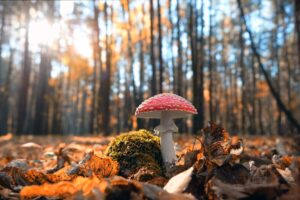
Permaculture, a design approach inspired by natural ecosystems, emphasizes principles of sustainability, diversity, and resilience in human settlements and agricultural systems. Mushrooms play a vital role in permaculture practices, where they are utilized for soil regeneration, waste management, and food production in harmony with nature. By integrating mushrooms into permaculture designs, practitioners can create resilient ecosystems that mimic the diversity and functionality of natural landscapes. However, it is important to try to follow ecology, which even prescribes a list of some of the protected species that especially farmers must pay attention to, and in case an accident does happen, they can be protected with excellent expert witness services.
One of the key roles of mushrooms in permaculture is soil regeneration and nutrient cycling. Certain species of fungi, such as oyster mushrooms and wine caps, are adept at breaking down organic matter and converting it into nutrient-rich soil, a process known as mycoremediation. By inoculating degraded soils with mushroom mycelium, permaculturists can accelerate the decomposition of organic waste, improve soil structure, and enhance fertility, creating fertile ground for plant growth and ecosystem health. The promotion of this use of mushrooms in agriculture is gaining momentum as more people learn about it, and if you run a business that you need more people to learn about, you can turn to an excellent Colorado Springs SEO company that will create an excellent promotion plan for you.
In addition to soil regeneration, mushrooms are valuable allies in waste management and resource recycling within permaculture systems. Kitchen scraps, agricultural residues, and even industrial by-products can be transformed into nutrient-rich compost or mycelium-based products through processes like vermicomposting and mycofiltration. These fungal-driven processes not only reduce waste and pollution but also create valuable resources for soil amendment and plant nutrition, closing the loop on nutrient cycles and promoting sustainable land stewardship. Their beneficial role cannot go unnoticed and unrecognized, and if you’re struggling to master all of this, a great homeschooling tutor in Bettendorf can help you to make sure you master your knowledge and get the best results on your tests.
Furthermore, mushrooms play a role in food production within permaculture designs, where they are cultivated alongside fruits, vegetables, and other crops in integrated systems. Agroforestry models incorporating mushroom cultivation, such as forest gardens and food forests, offer opportunities to maximize productivity while minimizing inputs and ecological impacts. Mushrooms provide not only nutritious food but also additional ecosystem services, such as pest control, soil conditioning, and microclimate regulation, making them valuable components of regenerative agriculture. At various agricultural fairs in Europe, which you can visit if you rent a car in Beograd, you will be able to find answers to all your questions related to the development and role of mushrooms in today’s agriculture, as well as how it can be improved.
Conclusion
In conclusion, mushrooms are integral to the practice of permaculture, where they contribute to soil regeneration, waste management, and food production in sustainable and resilient ecosystems. By harnessing the power of fungi, permaculturists can create harmonious relationships between humans, plants, and microorganisms, fostering abundance and diversity in landscapes designed to thrive in harmony with nature. As we strive to build a more sustainable future, mushrooms offer valuable lessons in ecological resilience, resource efficiency, and holistic design that can guide us toward a regenerative paradigm of living in harmony with the Earth. If you invest wisely in one of the homes in Boca Falls, you will not only have a valuable livable, and environmentally friendly property, but you can also enjoy your spacious yard where you can work on growing your own small home garden.

